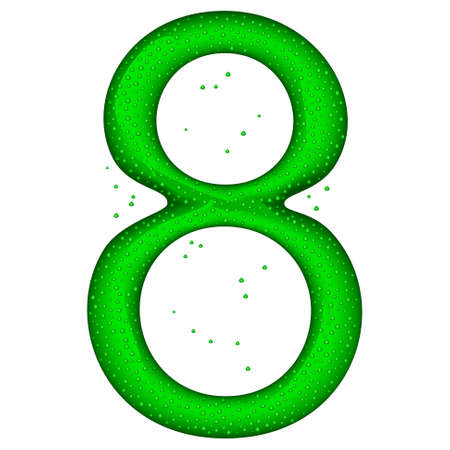Introduction: The British Fascination with Dreams
Across the rolling hills and misty moors of the United Kingdom, dreams have woven themselves into the very fabric of national consciousness. From ancient Celtic seers to modern-day psychologists, the British have long been captivated by the mysteries of the sleeping mind. This fascination is not merely a relic of the past but continues to shape contemporary discussions about identity, creativity, and even mental health. Whether through whispered tales around a village hearth or through scholarly debate in Oxbridge halls, dream interpretation has maintained a distinctive presence in British culture. As we embark on an exploration of its historical evolution, it becomes clear that dreams in the UK are more than fleeting night-time visions; they are windows into collective hopes, fears, and aspirations that have defined generations.
2. Ancient and Medieval Approaches: Myths, Folklore, and Superstition
To truly grasp the British approach to dream interpretation, we must journey back to an era where myth, legend, and superstition reigned supreme. In ancient Britain, dreams were often seen as messages from otherworldly realms—a belief deeply rooted in both Celtic and Norse traditions that swept across the isles. For the Celts, dreams might come from the Otherworld, offering prophecies or warnings wrapped in poetic symbolism. Meanwhile, with the arrival of Norse settlers, sagas brought tales of omens foreseen in sleep, blending seamlessly with existing folklore.
Celtic Legends and Norse Influences
The indigenous Celtic tribes viewed dreams as bridges between the physical world and mystical forces. Druidic priests sometimes acted as interpreters, deciphering dream symbols to guide tribal decisions or predict battles. When Norse invaders arrived from the 8th century onwards, their own mythological framework—where gods such as Odin would send visions—merged with local customs. This confluence created a uniquely British tapestry of dream lore.
Key Themes in Early Dream Interpretation
| Culture | Interpretative Focus | Typical Symbolism |
|---|---|---|
| Celtic | Messages from ancestors or deities | Animals, rivers, supernatural beings |
| Norse | Warnings and guidance from gods | Runes, ravens, battle scenes |
| Anglo-Saxon/Medieval | Moral lessons and omens | Church imagery, angels, devils |
Medieval Superstitions and Church Doctrine
As Christianity took hold during the early medieval period, interpretations shifted under church influence. The clergy often warned against placing too much stock in dreams; some were said to be sent by God or saints as guidance, while others were deemed temptations from the devil meant to lead believers astray. Manuals for confessors occasionally included sections on discerning ‘good’ dreams from ‘bad’ ones—a reflection of the pervasive anxiety over spiritual purity.
A Cultural Mosaic of Meaning-Making
This rich interplay between pagan mythologies and Christian moral frameworks made medieval Britain a fascinating landscape for dream interpretation. Whether through rural folk traditions or ecclesiastical teachings, people sought meaning in their nocturnal visions—often blending old legends with new dogmas. The roots of contemporary British attitudes towards dreams can thus be traced to this dynamic period of cultural exchange and adaptation.

3. Renaissance Rationalism and Enlightenment Skepticism
The Renaissance marked a pivotal turning point in the UK’s approach to dream interpretation, with the winds of rationalism and humanism reshaping intellectual thought. Whereas medieval perspectives were often steeped in religious symbolism and supernatural causality, thinkers of this era began to challenge these established narratives. British scholars, influenced by continental philosophies, started scrutinising dreams through the lens of empirical observation and logic. Figures such as Sir Thomas Browne questioned mystical explanations, suggesting instead that dreams could be natural phenomena, rooted in bodily humours or the mind’s nightly processes.
This rational shift gained traction during the Enlightenment, a period synonymous with scepticism and spirited debate within Britain’s coffee houses and salons. Intellectual heavyweights like John Locke argued that dreams merely reflected the residue of waking impressions rather than divine messages or omens. This new outlook didn’t completely erase earlier beliefs but fostered a lively discourse about the origins and significance of dreams. The pendulum swung from viewing dreams as messages from another realm to seeing them as psychological curiosities worthy of secular study. In essence, the UK’s journey through these centuries was characterised by a gradual but decisive move away from supernatural interpretations towards a more scientific and questioning mindset—a transformation that laid the groundwork for modern approaches to dream analysis.
4. Victorian Perspectives: Morality, Mystery, and the Occult
The Victorian era in Britain (1837–1901) stands as a fascinating crossroads where rational inquiry and mystical fascination coexisted in popular culture. This period saw a remarkable surge of interest in dream interpretation, reflecting both the moral concerns of a rapidly industrialising society and an enduring appetite for the mysterious and occult. Victorians were deeply influenced by their religious upbringing, yet they also delighted in scientific discoveries and new theories about the mind, which created fertile ground for diverse approaches to understanding dreams.
Scientific Rationality Meets Spiritual Curiosity
On one hand, Victorians admired progress and innovation. Advances in psychology, especially early theories from figures like Samuel Taylor Coleridge and later Sigmund Freud (though more prominent at the century’s end), encouraged people to consider dreams as windows into the subconscious. On the other hand, spiritualism swept through parlours up and down the country, with séances, tarot readings, and dream circles becoming fashionable among all classes. This unique blend led to a proliferation of dream manuals, pamphlets, and books promising to decode nocturnal visions.
Dream Manuals: A Booming Industry
Victorian publishers seized upon public curiosity with gusto. Dream interpretation guides became household staples; some leaned towards psychological explanations while others indulged in mystical symbolism or biblical references. Below is a comparison of two typical Victorian approaches to dream analysis:
Rational Approach |
Occult Approach |
|---|---|
Focus on personal experience and emerging psychology.Explains dreams as reflections of daily worries or desires. |
Rooted in symbolism, folklore, and spirituality.Associates dreams with omens or messages from beyond. |
Moral Undertones and Social Anxiety
The Victorians’ moral compass was ever-present in their reading of dreams. Nightly visions were often interpreted through the lens of virtue and vice—dreams warning against temptation or suggesting divine approval for upright behaviour. At the same time, anxieties about industrialisation, social upheaval, and changing gender roles crept into dream narratives, subtly shaping interpretations offered by both scientific thinkers and occult practitioners.
A Lasting Legacy
This era’s eclectic approach not only mirrored its contradictions but also left an indelible mark on British attitudes toward dreams. The coexistence of logic and lore helped set the stage for twentieth-century developments in psychoanalysis and popular psychology. In sum, Victorian Britain embraced dream interpretation as both science and spectacle—an enduring testament to its restless curiosity and cultural complexity.
5. The Freudian Revolution and British Psychology
With the dawn of the twentieth century, dream interpretation in Britain entered an entirely new chapter, marked by the arrival of Sigmund Freud’s revolutionary theories. Freud’s seminal work, The Interpretation of Dreams (1899), crossed the Channel and found a receptive—if sceptical—audience among British intellectuals. Freud argued that dreams were not mystical portents but rather expressions of repressed desires and unconscious conflicts, offering a radical departure from earlier religious and superstitious interpretations. His ideas infiltrated British psychology at a time when the field was undergoing its own transformation, moving away from mere philosophical speculation toward empirical inquiry.
The Arrival of Freudian Thought in the UK
The early 1900s saw Freud’s theories championed by a handful of pioneering British psychologists and psychoanalysts, including Ernest Jones, who became Freud’s key advocate in Britain. Jones founded the British Psychoanalytical Society in 1919, catalysing the spread of psychoanalytic thought across academic circles and clinical practice. Initially, Freud’s emphasis on sexuality and unconscious motivation met with resistance from the more reserved British establishment. However, as the horrors of World War I underscored the fragility of the human mind, Freud’s focus on internal conflict and trauma began to resonate more deeply.
Impact on Mainstream Psychology and Cultural Attitudes
Freud’s influence soon extended beyond professional psychology into broader cultural discourse. By the mid-twentieth century, dream analysis had become a popular topic in literature, theatre, and even everyday conversation. The idea that dreams might offer insights into one’s hidden self appealed to a nation grappling with rapid social change and uncertainty. While some British thinkers adapted Freudian theory to fit local sensibilities—often downplaying its overtly sexual aspects—they retained his core insight: that dreams are meaningful psychological phenomena worthy of investigation.
A Lasting Legacy in Contemporary Britain
Today, while Freudian psychoanalysis is no longer as dominant within academic psychology as it once was, its legacy endures in British culture. From university lecture halls to television dramas, the notion that our dreams reflect deeper truths about our psyche remains compelling. More importantly, Freud’s arrival fostered an enduring curiosity about the inner workings of the mind—one that continues to shape how Britons interpret both their dreams and themselves.
6. Contemporary Britain: Popular Culture and Scientific Discourse
In contemporary Britain, dream interpretation occupies a unique intersection between popular culture and scientific investigation. The public fascination with dreams is as strong as ever, but the ways in which Britons engage with their night-time visions have evolved dramatically.
Televised Dream Clinics: Dreams on the Small Screen
Television has played a significant role in shaping collective attitudes toward dreams in the UK. Programmes featuring “dream clinics” — from chat show segments to reality series — regularly invite psychologists or “dream experts” to unpack viewers’ nocturnal narratives. These segments blend entertainment with a veneer of expertise, often drawing from both Freudian symbolism and local folklore. The British tendency towards wit and understatement can be seen in these shows, where dream analysis is frequently delivered with a dose of humour and self-awareness.
Academic Research: Science Meets Subjectivity
Meanwhile, British universities have contributed substantially to the empirical study of dreams. Departments of psychology and neuroscience delve into the cognitive and physiological mechanisms behind dreaming, moving beyond mere symbolism to explore the functions of REM sleep, memory consolidation, and emotional regulation. Journals publish studies on everything from nightmares among university students to the cultural specificity of dream motifs in UK populations.
The Blending of Tradition and Modernity
What sets modern British dream interpretation apart is its hybrid nature. While scientific discourse emphasises objectivity and neurobiology, public engagement remains deeply entwined with tradition — from referencing Shakespeare’s “sleep that knits up the ravelled sleave of care” to consulting online forums for “what it means if you dream of losing your keys.” This synthesis reflects broader trends in British society: a respect for evidence-based approaches alongside an enduring affection for myth, metaphor, and storytelling.
A Crossroads of Curiosity
Ultimately, how today’s Britons interpret their dreams says much about the nation’s evolving identity. In blending ancient myth with cutting-edge science — and never shying away from a bit of banter — Britain demonstrates that even as our understanding deepens, the allure of dreams remains as mysterious and compelling as ever.
7. Conclusion: The Enduring Place of Dreams in British Life
Reflecting on the historical evolution of dream interpretation in the UK, it becomes clear that dreams have always held a unique position in the British imagination. From ancient Celtic legends, where dreams were believed to be messages from the otherworld, through the medieval fascination with omens and symbolism, to the Victorian era’s blend of superstition and burgeoning scientific curiosity, each period has left its mark on how Britons understand their nightly visions. The arrival of psychoanalysis in the early 20th century brought Freud and Jung into the national conversation, encouraging a more introspective and psychological approach that resonates with today’s mental health awareness.
The Shifting Landscape of Meaning
British society’s approach to dreams has never been static; rather, it mirrors broader cultural, religious, and scientific shifts. As rationalism took hold during the Enlightenment, dream interpretation adapted, moving away from mystical explanations towards more secular and analytical frameworks. Yet, even as science sought to demystify dreams, folklore persisted—evident in regional sayings and local traditions that still pepper daily life across the UK.
A Modern Resurgence
In recent years, there has been a renewed interest in dream analysis, fuelled by both popular psychology and digital culture. Apps for tracking sleep patterns, podcasts discussing lucid dreaming, and workshops on dream journaling all point to an ongoing fascination. This modern engagement is less about divination and more about self-discovery—a distinctly British blending of curiosity and pragmatism.
Dreams as Cultural Conversation
Today, dreams remain a staple of British conversation, whether over a morning cup of tea or within the pages of literary fiction. They serve as metaphors for ambition (“to dare to dream”), vehicles for humour (“what a strange dream I had last night!”), and touchstones for collective anxieties and hopes.
In sum, the evolution of dream interpretation in the UK is testament to the nation’s ability to adapt age-old beliefs to contemporary realities. Dreams continue to offer Britons insight into themselves and their society—bridging past and present, myth and mind. The enduring place of dreams in British life speaks not only to their mystery but also to their power as vessels for meaning in an ever-changing world.


